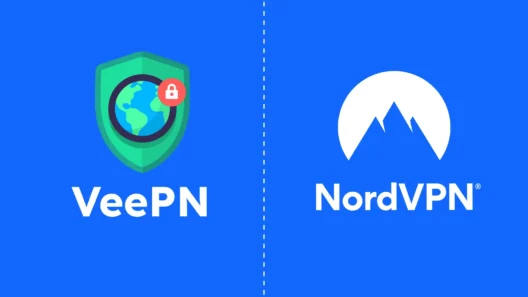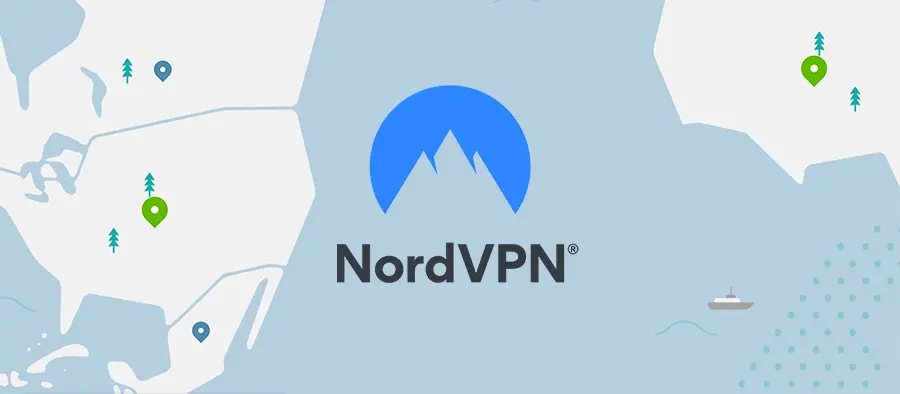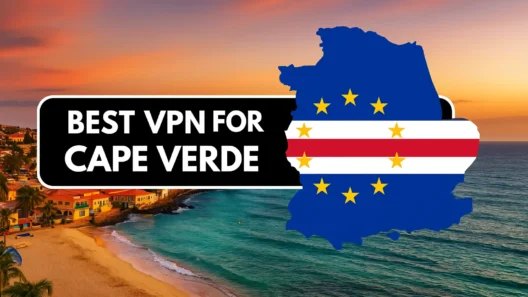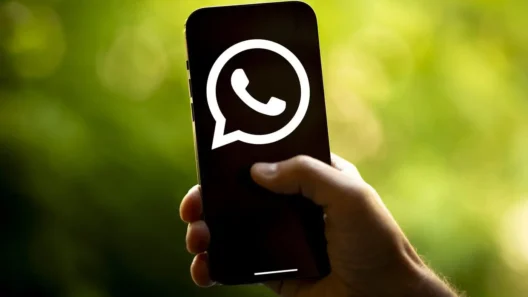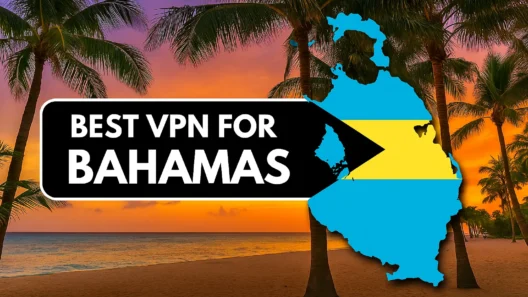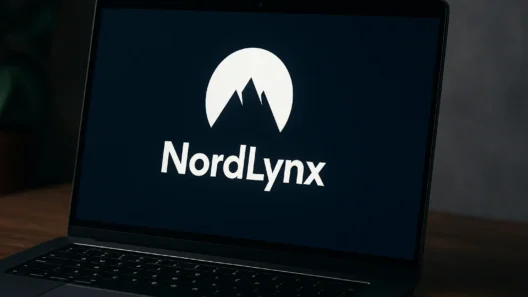A few years ago, I wasn’t looking for anything fancy. I just wanted to stop feeling weird about using public Wi-Fi, and I wanted a bit more control over what parts of the internet I could reach. That’s where the whole “let’s try a VPN” journey started for me.
I tested a few services. Some were okay-ish, some were painful. Then I landed on NordVPN… and never really left. Fast forward three years, and NordVPN is now part of my daily internet ritual. Whether I’m working remotely, watching foreign content, traveling, gaming, or just browsing safely, it’s running silently in the background—like a digital seatbelt I don’t think twice about.
What surprised me the most? It doesn’t get in the way. Quite the opposite. It actually improves how I use the internet in more ways than I expected. And with time, I started discovering features that made me go, “Wait… it can do that too?”
So here’s my honest take on NordVPN: no sugarcoating, no sponsored hype. Just real-life use cases, performance, and the small details that make it worth it—for me, and probably for you too.
Key Facts About NordVPN
| Feature | Value | Notes |
|---|---|---|
| 🌍 Number of Servers | 7.800+ | Spread across 180+ countries |
| 🚀 Average Speed | Up to 800 Mbps (with NordLynx) | Real-world performance varies by location |
| 📱 Simultaneous Devices | 10 | Per one subscription/account |
| 🔐 Encryption | AES-256 | Military-grade, industry standard |
| 🌐 Supported Platforms | Windows, macOS, Linux, Android, iOS, browsers | Plus SmartTVs, routers via SmartDNS |
| 🛡 No-Logs Policy | Independently audited (5×) | Verified by Deloitte and PwC |
| 💾 Server Type | RAM-only (diskless) | No data can be stored locally |
| 🎮 Gaming Friendly | Yes | Low ping with nearby servers, Meshnet for LAN play |
| 📺 Streaming Access | Netflix, BBC, Hulu, Disney+, Prime Video, HBO Max, and others | SmartPlay for geo-unblocking |
| 📥 Torrent Support | Yes – via P2P-optimized servers | Includes SOCKS5 proxy support |
| 💰 Price (2yr plan) | ~$3.39/month | Discounts available during promotions |
| 🇵🇦 Jurisdiction | Panama | No data retention laws, outside surveillance pacts |
What NordVPN Actually Does – and How I Use It Daily
Double VPN – When Privacy Needs an Extra Layer
There are times when I just don’t want anyone—ISP, government, or sketchy network admins—to know where I’m connecting from. Double VPN is my go-to for that. It reroutes your internet traffic through two VPN servers instead of one. So, for example, my connection might go from the Germany to Switzerland before reaching the final website.
Yes, it slows things down a bit. But not drastically. And if I’m not streaming or gaming, I don’t even notice the lag. I use it mainly when I’m researching sensitive topics, accessing restricted resources, or when I just want peace of mind that nobody can trace anything back to me.
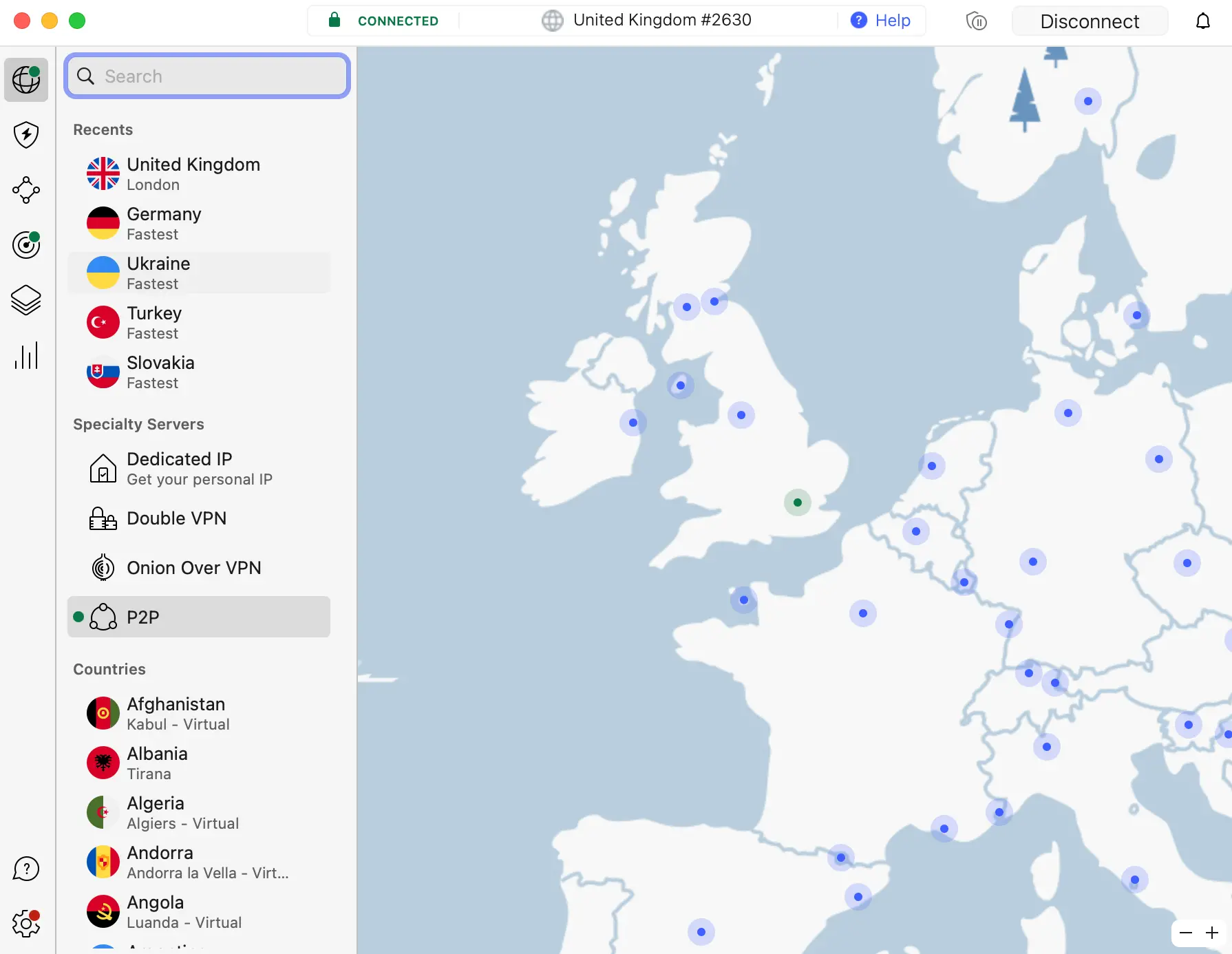
Kill Switch – My Personal Data Bodyguard
This feature saved me more than once. Imagine you’re on a dodgy Wi-Fi network, and your VPN drops for some reason. Normally, your device would just keep using the unsecured internet, which means your IP and data could leak.
With Kill Switch on, your internet shuts off the second the VPN connection is interrupted. NordVPN lets you set this on a system-wide level or app-by-app. Personally, I enable it for everything. No exceptions. It’s like having an automatic brake system that kicks in the second something goes wrong.
Threat Protection – Built-in Security That Actually Works
When NordVPN rolled out Threat Protection, I didn’t expect much. I thought it was just another glorified ad-blocker. But it turned out to be a pretty serious security layer. It blocks ads, trackers, phishing links, and even malicious file downloads.
What’s cool is that it works even if you’re not actively connected to a VPN tunnel. It’s always watching. I’ve clicked on a few questionable links in forums or emails, and Threat Protection jumped in before any damage could be done. It gives me just enough peace of mind to explore freely—without turning my browsing into Russian roulette.
Split Tunneling – Because Not Everything Needs to Go Through VPN
Split tunneling is pure convenience. There are times when I want some apps to use the VPN, while others should bypass it completely. For example, my banking app tends to freak out if I use a foreign IP. With split tunneling, I just exclude that app, and the rest of my traffic stays encrypted.
On Android, this feature works beautifully. I select which apps go through the VPN tunnel, and which ones don’t. It’s seamless. No app crashes, no weird errors. Just flexibility when I need it.
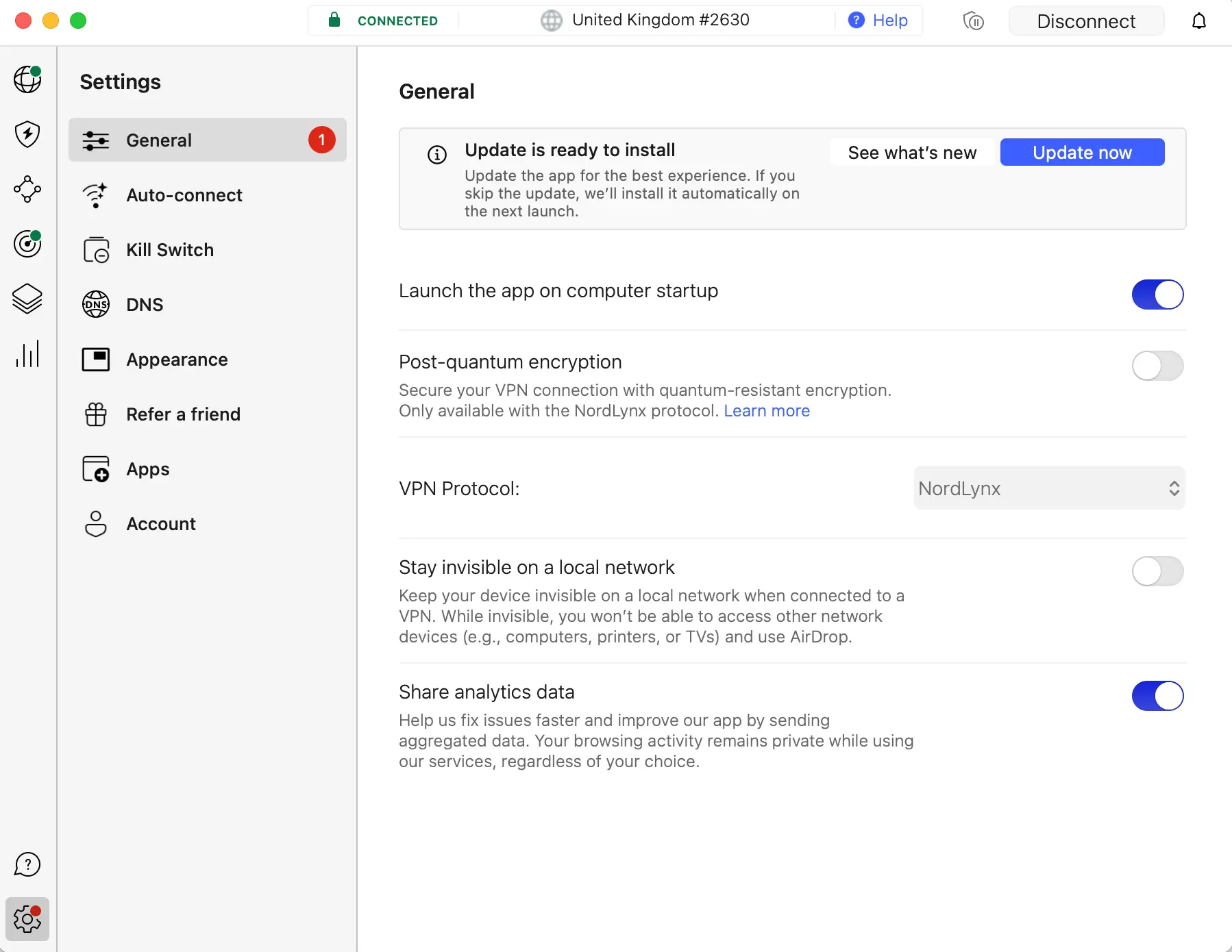
Onion Over VPN – For Serious Anonymity
Let’s be real: I don’t use this every day. But knowing it’s there is comforting. Onion Over VPN lets you route your traffic through the Tor network after connecting to a VPN. That means double encryption, multi-layered bouncing, and extreme anonymity.
Yes, it’s slower. But for ultra-private tasks—like whistleblowing, researching in high-censorship countries, or anything sensitive—it’s the digital version of a burner phone and sunglasses. I tried it out just to see how it worked, and it impressed me.
Meshnet – A Hidden Gem I Now Use All the Time
This one deserves a spotlight. Meshnet lets me create a secure network between my own devices or with friends. I use it for remote file access, collaborative work on big projects, and—my personal favorite—LAN gaming with buddies across the globe.
All I do is connect two devices through Meshnet, and they behave like they’re on the same home network. No need for port forwarding or sketchy workarounds. I can access my desktop PC from my laptop on the road, or transfer giant files without using third-party cloud services.
Once you try Meshnet, there’s no going back.
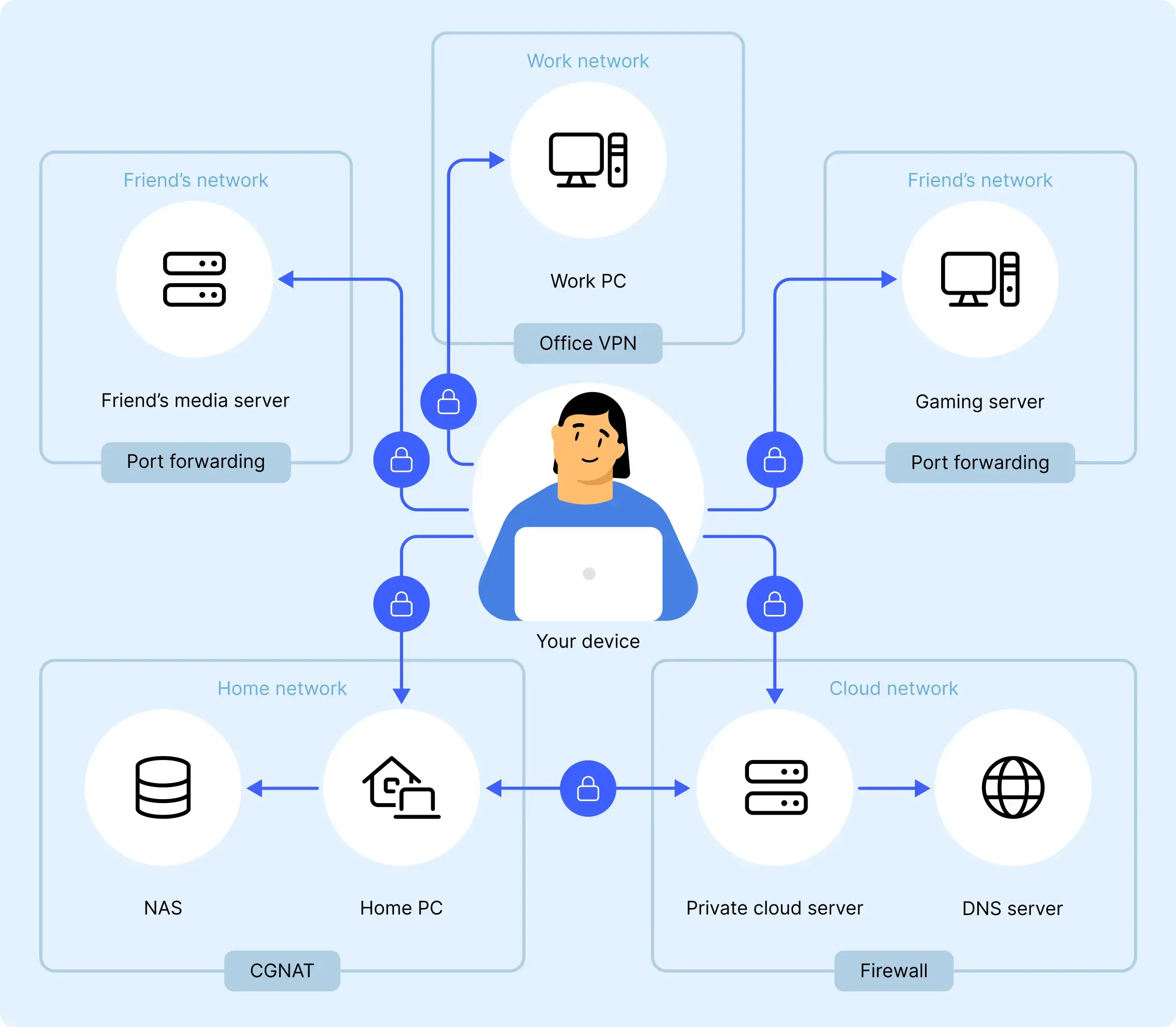
How NordVPN Performs Across My Devices (And Why That Consistency Matters)
I’m not a one-device person. I switch between my Windows laptop, Android phone, Linux server, and occasionally a Mac or smart TV. And here’s the thing: NordVPN doesn’t just exist on all of these platforms—it actually works well on every one of them. Not just “it runs,” but “it feels right.” That might sound small, but when a service behaves consistently across everything you use, it’s a game-changer.
On Windows and macOS – My Workhorses
Let’s start with the big ones: desktop and laptop. On Windows, NordVPN is my always-on companion. The interface is clean, fast, and intuitive. There’s a clickable map (yes, it’s surprisingly useful), quick-connect button, and easy access to specialty servers like P2P or Obfuscated.
What I appreciate most is that the desktop app doesn’t drown you in features. Everything is logically placed, and you can find Kill Switch, Threat Protection, or protocol switching in just a couple of clicks.
The macOS version is almost identical. And for once, I’m not getting a “dumbed down” version for Mac. It’s just as fast and reliable, and you still get access to NordLynx, Split Tunneling, and all the security settings you’d expect.
On Android and iOS – Lightweight but Full-Powered
NordVPN’s mobile apps are one of the reasons I stuck around. They’re slick, fast, and don’t eat up resources. I’m on Android, and the experience is buttery smooth. I can enable Split Tunneling, set auto-connect on unsecured Wi-Fi, toggle Threat Protection—and all of it just works. Even when I switch from Wi-Fi to mobile data (or vice versa), the tunnel doesn’t drop.
And yes, Kill Switch is available on mobile too. Super useful if you forget that you’re connected through some sketchy hotspot at a café or train station.
I’ve also tried it on iOS, and while Apple’s ecosystem is more restricted, NordVPN still manages to deliver 90% of the experience. The performance is strong, and the app is just as intuitive.
On Linux – Terminal Warriors Welcome
Here’s something most VPNs either ignore or botch: Linux support. NordVPN doesn’t. It has a fully working command-line client that’s clean and functional. I use it on my home server, and connecting to a specific server or enabling Meshnet is as simple as typing one line in the terminal.
If you’re not a fan of the CLI, there’s also an unofficial GUI version for certain distros, but I’ve found the native CLI fast and reliable. No gimmicks, no fluff—just a solid Linux tool that behaves exactly how it should.

Browser Extensions – Fast Switch for Web-Only Protection
Sometimes, I don’t need full-system VPN. I just want to route my browser traffic through a different country. For that, the Chrome and Firefox extensions are perfect. They act more like encrypted proxies, focusing only on your browser while leaving the rest of your device untouched.
It’s fast, super lightweight, and perfect for quick IP switches—say, if I want to check prices on a flight from a different region or access geo-blocked content without affecting other apps.
Bonus: the extension includes built-in ad blocking and tracker blocking. My browser feels faster and less annoying because of it.
Smart TVs and Devices Without a VPN App – Covered with SmartDNS or Router Setup
This part is often overlooked: not all devices support VPN apps. Smart TVs, consoles, even some media boxes can’t run a VPN client. That’s where NordVPN’s SmartDNS steps in. I use it to watch American Netflix or Hulu directly on my TV without sideloading anything weird.
You can also install NordVPN directly on your router. That way, every device connected to your home network is automatically protected. Great for families or for smart home setups where you don’t want to configure every lightbulb individually.
Consistency Across All Platforms
What I value the most is this: NordVPN behaves the same way on every platform. The interface might look a little different, but the functionality is there. I don’t have to re-learn it on every device. I don’t have to tweak the settings every time. And that’s what makes it feel like a reliable, integrated tool—not just another app I have to “manage.”
Real-World Performance: Is NordVPN Fast, Stable, and Worth Your Bandwidth?
Let me say this upfront: I don’t care how many gigabits per second a VPN claims to offer on its website. I care about what happens when I’m late for a Zoom call, I need to download a big file, or I’m halfway through a Netflix show and don’t want the dreaded buffering circle to ruin the vibe.
After years of daily use, I can confidently say NordVPN delivers where it counts. Let’s break that down.
Speed NordVPN – Surprisingly Fast, Even With Encryption
Speed is where I expected a VPN to compromise. I mean, you’re encrypting and rerouting all your traffic—surely that must slow things down, right?
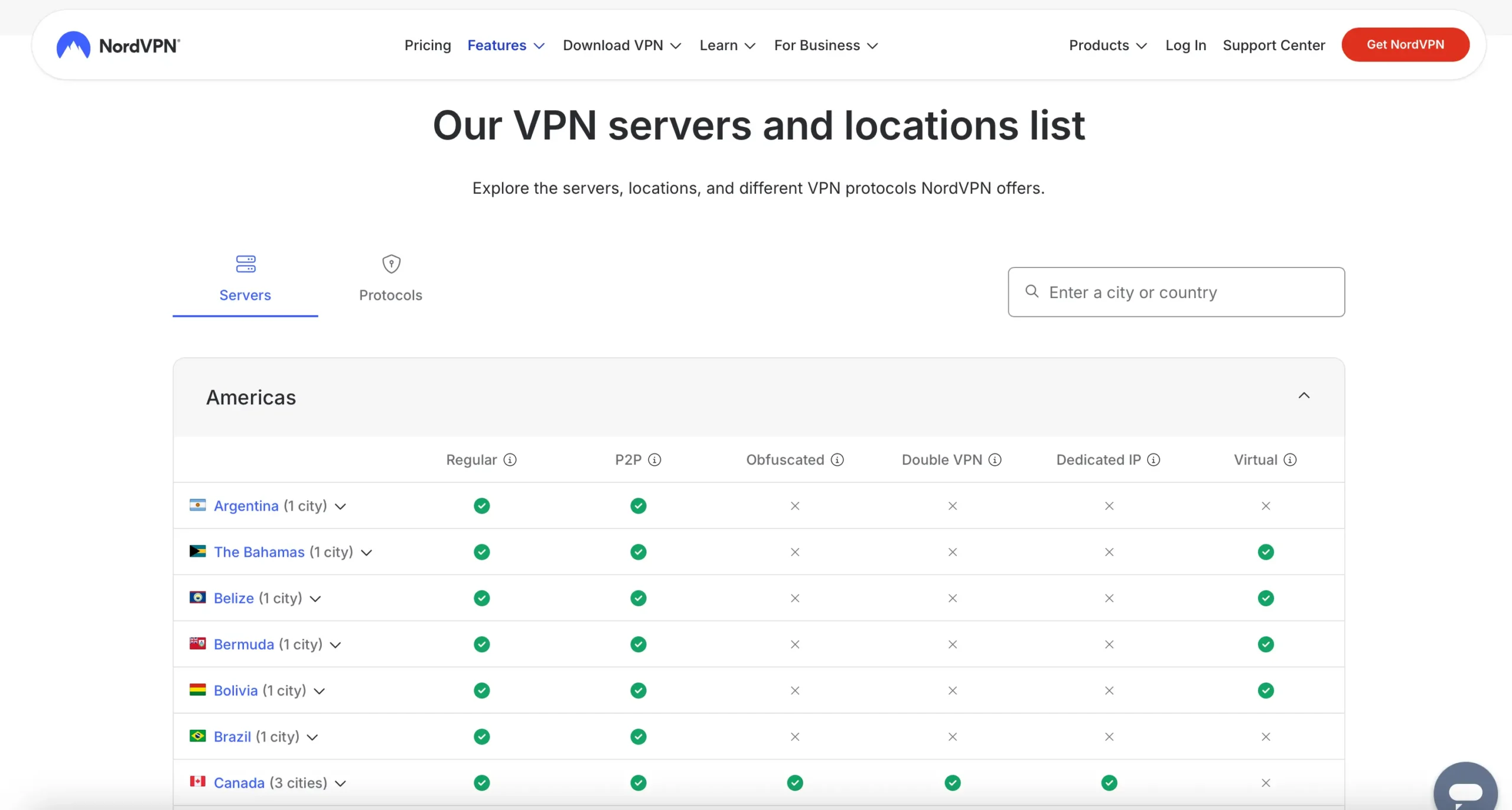
Not really.
When I’m connected to local or nearby servers (e.g. within the EU), my download and upload speeds are barely affected. I can still pull in hundreds of Mbps, stream in 4K, upload to cloud storage, and browse with zero lag. That’s thanks to NordLynx, their custom implementation of the WireGuard protocol, which is ridiculously efficient.
When I connect to servers further away—like the U.S. or Japan—I do see a drop, but it’s surprisingly minor. Streaming still works. File transfers are still quick. Unless I’m running benchmark tools, I barely notice.
Streaming NordVPN – Bye Bye Geo-Blocks, Hello Global Content
Let’s be real: streaming is half the reason most people get a VPN. And yeah, I’m no different.
Netflix US? Works. BBC iPlayer? No problem. Disney+, Amazon Prime Video, Hulu? All accessible. NordVPN’s SmartPlay feature is doing serious behind-the-scenes magic. I don’t need to fiddle with DNS settings or hope I picked the right server. It just works.
What’s especially great is that the connection is smooth. I watch in HD or 4K regularly—no buffering, no annoying error messages saying “You seem to be using a proxy.” Just press play and enjoy.
Even better, I can set up SmartDNS on devices that don’t support the VPN app directly (like my smart TV), and still access content libraries from other countries.
Torrenting NordVPN – Full Speed, Fully Private
If you download large files often—legally, of course—then NordVPN’s P2P support is a blessing. They have dedicated P2P servers that are optimized for torrent traffic. These aren’t throttled, capped, or hidden somewhere in the back menu. You can find them easily, and they work flawlessly.
I use clients like qBittorrent and uTorrent, and when I’m connected to one of NordVPN’s P2P servers, I get the full bandwidth my ISP gives me. No joke. I can download massive files while staying completely anonymous, without leaks or exposure.
If you want to get fancy, there’s even SOCKS5 proxy support for added speed tweaking—but I rarely need it. The regular VPN tunnel already gets the job done.
Gaming NordVPN – Low Latency and No Dropouts
You might think gaming and VPNs don’t mix. And yeah, with the wrong service, they really don’t.
But NordVPN? Surprisingly solid for gaming.
When I connect to a nearby server—say, in Germany or France—I can play online shooters like Call of Duty, Valorant, or CS:GO with almost the same ping as without VPN. I’ve even had cases where using the VPN gave me a more stable route to the game server than my regular ISP did.
The best part? Meshnet. I’ve used it to create virtual LAN parties with friends abroad. We connect over encrypted channels, launch the game, and it behaves like we’re all sitting in the same room on the same Wi-Fi. It’s nerdy as hell, but super fun.
Public Wi-Fi – No More Anxiety at Airports or Cafés
Public Wi-Fi is the digital Wild West. You never know who’s sniffing around, trying to collect passwords or hijack sessions. I used to be super cautious. Now, I just fire up NordVPN and relax.
Even when the Wi-Fi is spotty—like on a train, in a hotel, or at a busy conference center—NordVPN holds the connection well. And if the connection drops for any reason, the Kill Switch cuts internet access immediately. That way, none of my data leaks into the open.
I don’t even think about it anymore. It’s just part of the way I connect.
What NordVPN Costs Me – And Why It’s Totally Worth It
NordVPN Pricing, Plans, and What You Actually Get
Let’s be honest: most VPNs lure you in with “$3/month” banners, only to hit you with conditions in fine print. I fell for that once or twice, but with NordVPN, what you see is more or less what you get—if you know when and how to buy.
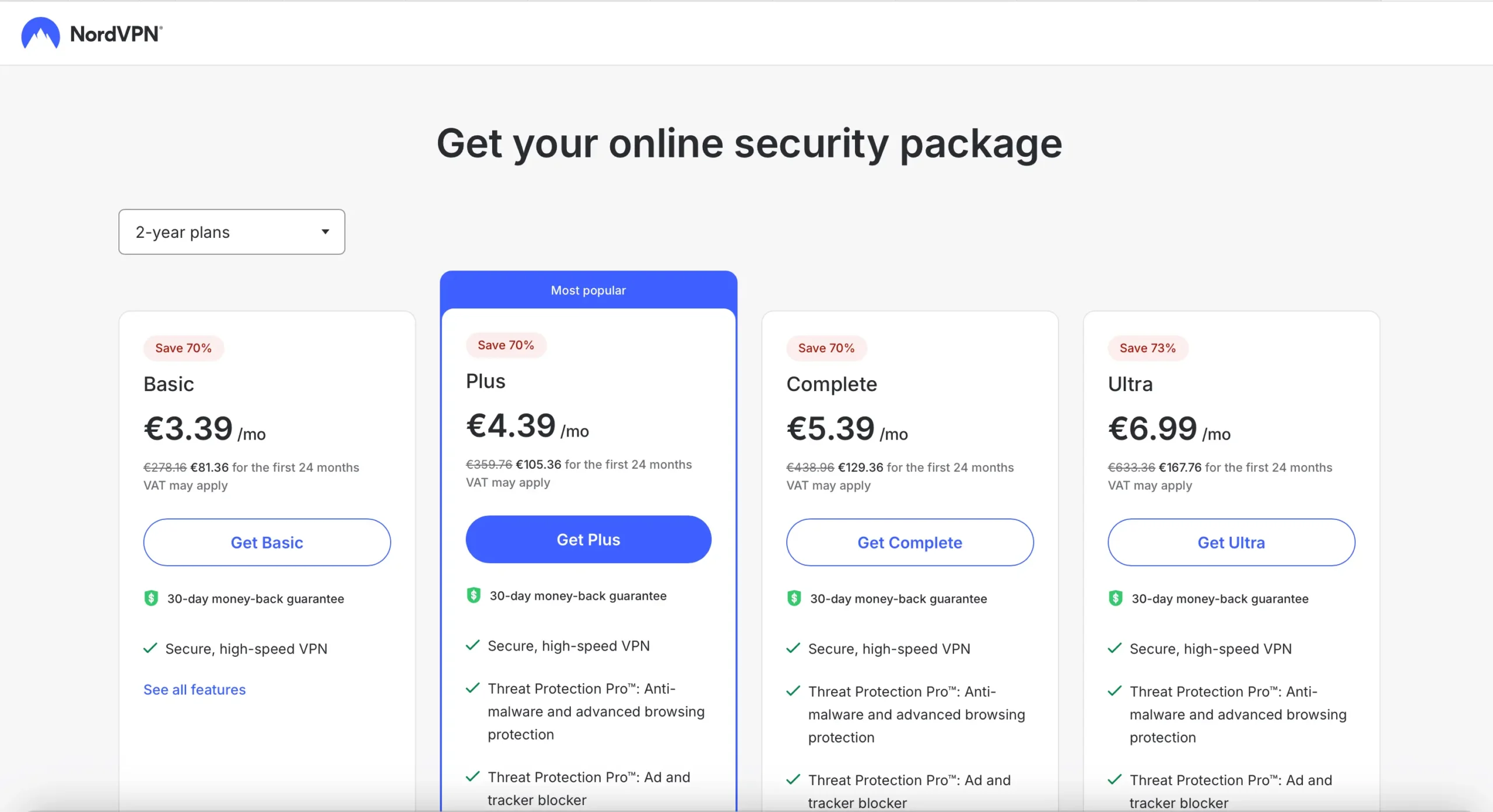
There are a few different plans:
- Standard (what I use) – Full access to VPN servers, Threat Protection, Meshnet, and specialty servers (like P2P, Double VPN, Onion, etc.).
- Plus – Adds NordPass, their password manager.
- Complete – Adds encrypted cloud storage (NordLocker).
- Ultimate – Includes dark web monitoring and some extras.
The Standard plan covers everything I need. I bought a 2-year subscription during a promo and ended up paying just a bit over $3 per month. It’s a one-time payment upfront, but honestly, for that price, I don’t mind. I only have to think about it once every couple of years.
How I Pay and What I Like About It
NordVPN accepts pretty much everything:
- Credit/debit cards
- PayPal
- Apple Pay / Google Pay
- Cryptocurrencies (Bitcoin, Ethereum, etc.)
- Prepaid cards and gift codes
Personally, I pay with a regular card. The payment process is simple, and I’ve never had billing issues. One thing I appreciate: they don’t sneak in auto-renewals without notice. I always get a heads-up before the plan renews.
If you’re privacy-conscious, crypto is a solid option. And if you’re a bargain hunter, wait for big promos—Black Friday, Cyber Monday, or even summer sales. NordVPN frequently offers 60–75% off if you’re willing to commit for the long haul.
Customer Support That Actually Helps (Yes, Really)
Look, I’m the type of guy who dreads contacting customer support. I expect long waits, robotic responses, or being handed off from one agent to another.
But with NordVPN? Genuinely different experience.
The live chat is available 24/7, and you don’t need to log in to start chatting. When I reached out for help unblocking a specific sports streaming service, I was connected to a real human in under a minute. Not a script-copying intern, but someone who clearly knew the product.
They gave me a list of recommended servers, a few setup tips, and even checked back to make sure it worked. I’ve contacted them two or three times since, and each time was equally smooth.
They also have a fantastic help center. Seriously, their documentation is top-tier. Whether I was setting up NordVPN on Linux or tweaking obfuscation settings on Android, I found step-by-step guides that actually made sense.
And What About the Competition?
I didn’t pick NordVPN on a whim. I tested multiple VPNs before settling. Here’s how they stacked up for me:
⚖️ ExpressVPN
Pros: Sleek UI, very stable, their Lightway protocol is solid
Cons: Expensive, fewer specialty servers
Takeaway: It’s polished and user-friendly, but honestly not worth the higher price when NordVPN gives me more features for less.
⚖️ Surfshark
Pros: Low price, unlimited devices
Cons: Little slower speeds, fewer server options in certain regions
Takeaway: Great budget option. But once you start needing advanced tools like Meshnet or specialty servers, NordVPN outshines it.
⚖️ CyberGhost
Pros: Cheapest long-term deal, simple interface
Cons: Lacks some power features, not ideal for advanced users
Takeaway: I’d recommend it to VPN newbies, but for power users or folks who care about anonymity and performance, NordVPN wins hands down.
Why I Stayed With NordVPN
At the end of the day, I don’t just want a VPN that works. I want one that works well, consistently, across all my devices, for whatever I throw at it—streaming, gaming, uploading, traveling, working remotely, even hosting files.
NordVPN has the best balance of:
- ✅ Speed
- ✅ Advanced privacy tools
- ✅ Ease of use
- ✅ Fair pricing
- ✅ Trustworthy support
It’s not the cheapest if you go month-to-month, but over two years, it’s a steal—especially for what you get.
Why I Trust NordVPN With My Data – Privacy, Security, and No-BS Protection
Encryption That Actually Means Something
Let’s start with the obvious: every VPN says it “encrypts your data.” But not all encryption is equal. NordVPN uses AES-256-bit encryption—the same standard used by militaries and financial institutions. If someone ever cracks this, trust me, the VPN will be the least of our worries.
In terms of protocols, you can pick between:
- NordLynx (their version of WireGuard): Super fast, super efficient
- OpenVPN: More traditional, still very secure, and better for obfuscated connections
I switch depending on the task. If I want speed and responsiveness, I go with NordLynx. If I’m in a country with tight internet restrictions, I flip over to OpenVPN.
Bottom line: you have full control over the balance between speed and stealth.
RAM-Only Servers – No Data Stored, Ever
This is one of my favorite things about NordVPN—and one that few people understand at first. Every NordVPN server runs entirely on volatile memory (RAM). That means:
- There are no hard drives
- No logs can be stored long-term
- When the server reboots, everything is wiped
Even if someone physically seized a NordVPN server, they’d find absolutely nothing useful. There’s simply nothing saved. It’s not just a promise of “no logs”—it’s a physical, technical guarantee.
Audited No-Logs Policy – Verified By Real Pros
Lots of VPNs say they don’t keep logs. NordVPN went several steps further.
They’ve undergone five separate independent audits by firms like Deloitte and PwC, who combed through their infrastructure, policies, and code to verify everything. The results? NordVPN does not collect:
- Browsing history
- IP addresses
- Traffic logs
- Time stamps
- Bandwidth usage
- Connection data
No logs, no loopholes, no shady footnotes in the terms of service. This isn’t just marketing—it’s been verified, again and again.
Based in Panama – Outside the Eyes of Surveillance Alliances
This matters more than you might think. NordVPN is headquartered in Panama, a country with:
- No mandatory data retention laws
- No surveillance alliances like Five Eyes, Nine Eyes, or Fourteen Eyes
- No government pressure to log or hand over user data
Panama allows NordVPN to operate independently and privately, away from intrusive oversight. That gives me a massive sense of relief—especially in an era where governments around the world are pushing for more data access.
Ongoing Testing, Bug Bounties, and Transparency
NordVPN doesn’t pretend to be perfect—but they do everything in their power to be prepared. They run continuous penetration tests to identify weaknesses, have an active bug bounty program (where ethical hackers can earn rewards for exposing flaws), and publish updates when they patch vulnerabilities.
In short, they’re not just reacting to problems—they’re hunting them down before they happen. That kind of attitude shows me they’re taking security seriously, not just selling it as a feature.
My Final Verdict – Why NordVPN Stays Installed on Every Device I Own
After three years of using NordVPN on every screen in my house, I’ve hit that rare moment in tech: I forgot it was even there.
It just works.
- It connects fast
- It keeps me safe
- It unblocks what I want to watch
- It doesn’t slow me down
- And it lets me customize it when I want to go deeper
Whether I’m gaming, streaming, working remotely, transferring files, or just scrolling Reddit on public Wi-Fi, I know I’m covered. The combination of speed, features, true privacy, and stable pricing make it one of the few digital tools I actually recommend to friends and family.
I don’t say that lightly.
FAQ
Is NordVPN really safe to use?
Yes. NordVPN uses AES-256 encryption, RAM-only servers, and has a strict no-logs policy verified by multiple independent audits. It’s one of the safest VPNs out there.
How fast is NordVPN compared to other VPNs?
With the NordLynx protocol, NordVPN offers excellent speeds—often faster than many competitors. Local servers deliver up to 500 Mbps in real-world tests.
Can NordVPN unblock Netflix and other streaming platforms?
Absolutely. NordVPN consistently unblocks Netflix, Hulu, Disney+, BBC iPlayer, and many more. It uses SmartPlay tech to bypass geo-restrictions with ease.
How many devices can I use with one NordVPN account?
You can use NordVPN on up to 10 devices simultaneously with one subscription. It supports Windows, macOS, Linux, Android, iOS, browsers, and more.
Does NordVPN keep any logs of my activity?
No. NordVPN has a strict no-logs policy and has been audited five times by firms like Deloitte. They don’t track your activity, IP, or browsing data.
Is NordVPN good for torrenting and P2P sharing?
Yes. NordVPN offers dedicated P2P servers and SOCKS5 proxy support. You can torrent safely and at high speeds with full encryption.
Does NordVPN work for gaming without increasing ping?
Yes. With nearby servers and low latency, NordVPN works great for gaming. You can even use Meshnet for secure virtual LAN gaming with friends.
What is Meshnet in NordVPN and how do I use it?
Meshnet lets you connect your own devices securely like a private LAN over the internet. You can access files remotely or play multiplayer games.
How much does NordVPN cost per month?
With a 2-year plan, NordVPN costs around $3.39/month. They offer major discounts during promos like Black Friday or Cyber Monday.
Is NordVPN worth it for long-term use?
Definitely. After 3 years of daily use, it remains one of the most reliable VPNs I’ve used—fast, secure, feature-packed, and consistently updated.

